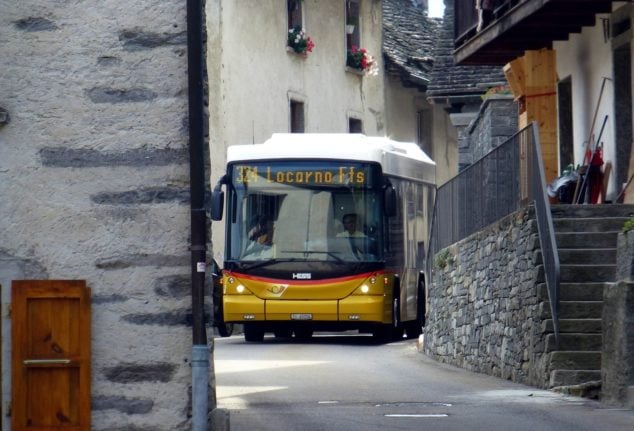If you are wondering what the big deal is — after all, a bus is just a bus — then you have been missing a truly special experience, because the route network of this particular mode of transport spans some of Switzerland’s most scenic routes.
The 2,400 PostBus vehicles currently in service cover a network of 936 lines that span almost 17,000 kilometres of picturesque country roads.
And while these buses used to transport only letters and packages, you should not worry about having to sit on top of a stack of mail and near a goat or two — these days, PostBuses transport human passengers only.
READ ALSO : What you need to know about Switzerland’s iconic yellow buses
Where can you catch a PostBus?
Unlike buses and trams crisscrossing only major urban centres, a PostBus ventures farther afield.
That’s because it is operating mostly in suburban, rural, and mountain areas, where other modes of transport could be lacking. It covers even the most remote villages and deepest valleys.
This is why you will mostly spot a PostBus in the countryside or on Alpine roads — no matter how narrow and winding.
If, for example, you want to go to the mountains but don’t feel like driving, a PostBus will bring you all the way up, practically to the top.
This link shows the entire PostBus route network in all regions of Switzerland, so you can see where the nearest one to your place of residence is.
How do you buy a ticket for the PostBus?
Just like for ‘regular’ public transport, you can download an app for the PostBus as well, through which you will be able not only to purchase your tickets, but also check the timetable.
Alternatively, you can also buy your ticket at a bus stop.
The good news is that you can also buy PostBus tickets through your SwissPass, the same way as for any other public transport.
READ ALSO: An essential guide for using Switzerland’s public transport ticket
What else do you need to know about the PostBus?
There are two further things.
One, that this bus serves not only as a public transport option, but can also be used for scenic rides.
The so-called Palm Express, for instance, starts in the resort of St. Moritz in Graubünden and ends in Lugano, Ticino.
The four-hour ride transits through the Maloja Pass, Val Bregaglia to Chiavenna (Italy), and then along Lake Como and Lake Lugano.
Secondly, it is worth riding the PostBus just to hear its unique, legendary horn, which celebrates its 100 anniversary this year.
Inaugurated in 1924, the distinctive three-tone horn comes, appropriately enough, from the overture of Rossini’s opera “William Tell.”
And by the way, the PostBus is one of many services provided by the Swiss Post Office. These are some of the others:
READ ALSO: 11 things you can do at a Swiss post office other than buy stamps



 Please whitelist us to continue reading.
Please whitelist us to continue reading.
Member comments